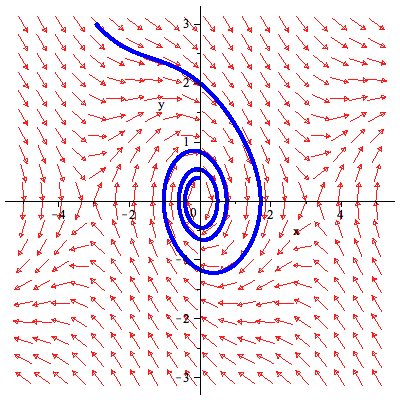Uppgift 6.4: 20
![]()
![]()
| (5.1) |
![]()
| (5.2) |
![]()
| (5.3) |
![]()
| (5.4) |
![]()
![]()
 |
Liapunovfunktionen
![]()
| (5.5) |
har den negativt semidefinita derivatan längs fältet (f,g)
![]()
| (5.6) |
Eftersom den enda lösningen med y = 0 också innebär att x = 0 är jämvikten asymptotiskt stabil.